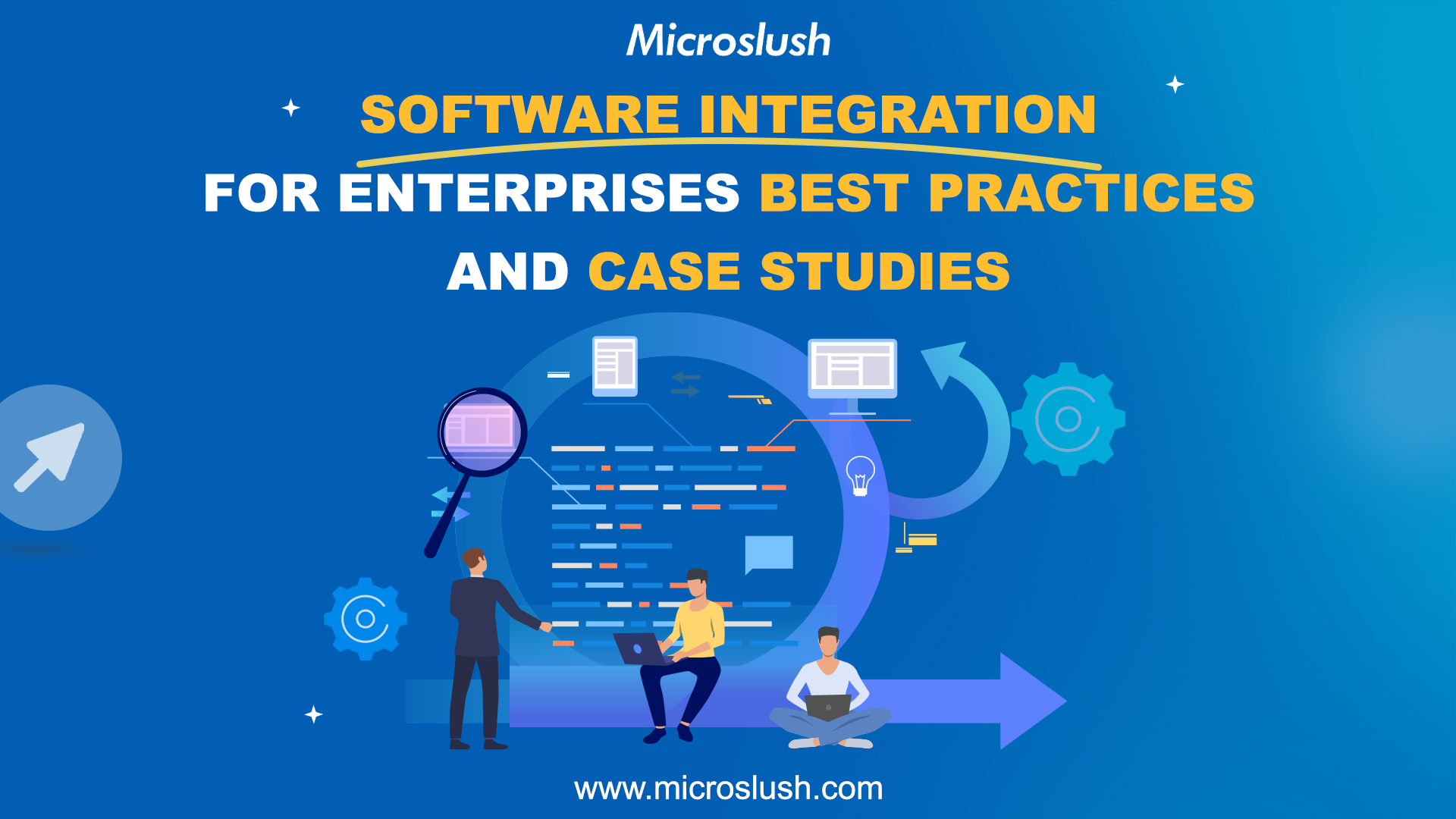13 Oct

Introduction
Software integration connects two or more software systems to share data and communicate. It is vital to any enterprise IT strategy, as it can improve efficiency, reduce costs, and enhance customer service.
Software integration has many benefits for enterprises. For example, it can help with:
-
Improve data accuracy and consistency: When software systems are integrated, they all have access to the same data. This helps ensure that data is accurate and consistent across the enterprise.
-
Reduce manual data entry: Software integration automates many tasks. This saves time and money and reduces error risk.
-
Improve communication and collaboration: Software integration can improve communication and collaboration between different departments within an enterprise. This is because employees can easily access the data they need, regardless of which software system it is stored in.
-
Enhance customer service: Software integration can help enterprises provide better customer service. They can see each customer, including their purchase history, support tickets, and other interactions.
However, software integration also poses challenges for enterprises. For example, it can be complex and expensive to implement. Additionally, it is imperative to carefully plan and manage software integration projects to minimize disruption risk.
Best Practices for Software Integration
There are several best practices enterprises can follow to ensure software integration success. These include:
-
Plan carefully: It is imperative to have a clear plan in place before starting any software integration project. This includes defining the project goals, the systems to be integrated, and the resources needed.
-
Communicate effectively: Communication is critical to software integration success. Communicating regularly with all stakeholders, including vendors, employees, and customers, is essential.
-
Test thoroughly: Once the software integration is complete, it is essential to verify it thoroughly to ensure it works as expected. This includes testing all scenarios users are likely to encounter.
-
Monitor and maintain: Once the software integration is in place, monitoring its performance and making any necessary adjustments is paramount. Additionally, it is essential to apply security updates and patches regularly.
What are the challenges of software integration for enterprises?
Software integration challenges for enterprises include:
-
Complexity: Software integration can be complex and expensive, especially when many systems are integrated.
-
Disruption of business operations: Software integration projects can disrupt business operations, especially if not carefully planned and managed.
-
Security risks: Software integration can introduce new security risks, as it creates new pathways for data to be accessed by unauthorized users.
Different types of software integration
There are many different types of software integration, but some of the most common include:
-
Point-to-point integration: This type of integration connects two specific software systems. It is often used to integrate systems from different vendors.
-
Enterprise application integration (EAI) connects multiple software systems to one integrated system. It is often used to integrate systems from the same vendor.
-
Data integration: This type focuses on integrating data from different software systems. It is often used to create a single data warehouse or data lake.
-
Business process management (BPM): This type of integration focuses on automating and optimizing business processes across different software systems. It improves business efficiency and effectiveness.
Tools and resources for software integration
Tools and resources are available to help enterprises with software integration projects. Some of the most popular include:
-
Integration platforms as a service (IPaaS): IPaaS platforms provide a cloud-based platform for integrating software systems. They offer a variety of features, such as pre-built connectors, data transformation tools, and workflow orchestration capabilities.
-
Enterprise service bus (ESB): ESBs provide a messaging infrastructure to integrate software systems. They allow systems to communicate without being directly connected.
-
API management platforms: API management platforms help manage and publish APIs. They can also be used to integrate software systems that use APIs.
Case Studies
The following are case studies of successful software integration projects for enterprises:
-
Case study 1: Enterprise Resource Planning (ERP) integration for a manufacturing company
A large manufacturing company used various software systems for ERP functions. This made it difficult for employees to understand company operations and share data between departments.
The company decided to implement an ERP integration solution. This solution connected the company’s ERP systems, allowing them to share data and communicate.
As a result of ERP integration, the company improved its efficiency, reduced costs, and enhanced customer service.
-
Case Study 2: Customer Relationship Management (CRM) integration for a retail company
A large retail company used a CRM system to track customer interactions. However, the CRM system was not integrated with the company’s other software systems, such as its ERP and e-commerce platforms.
This made it difficult for the company to get a complete view of each customer and provide a seamless customer experience.
The company decided to implement a CRM integration solution. This solution connected the company’s CRM system to its other software systems.
As a result of CRM integration, the company improved its customer service and increased sales.
-
Case study 3: Supply Chain Management (SCM) integration for a logistics company
A large logistics company used various software systems for SCM functions. This made tracking inventory levels, managing orders, and coordinating shipments difficult.
The company decided to implement an SCM integration solution. This solution connected the company’s SCM systems, allowing them to share data and communicate.
As a result of SCM integration, the company improved its efficiency, reduced costs, and enhanced customer service.
Conclusion
Software integration is an essential part of any enterprise IT strategy. It can help enterprises improve efficiency, reduce costs, and enhance customer service.
However, it is crucial to carefully plan and manage software integration projects to minimize disruption risk.
For Tech related queries, the Microslush team provides the best services and responses to customers on time. Contact us at https://www.microslush.com/index.php/contact.


